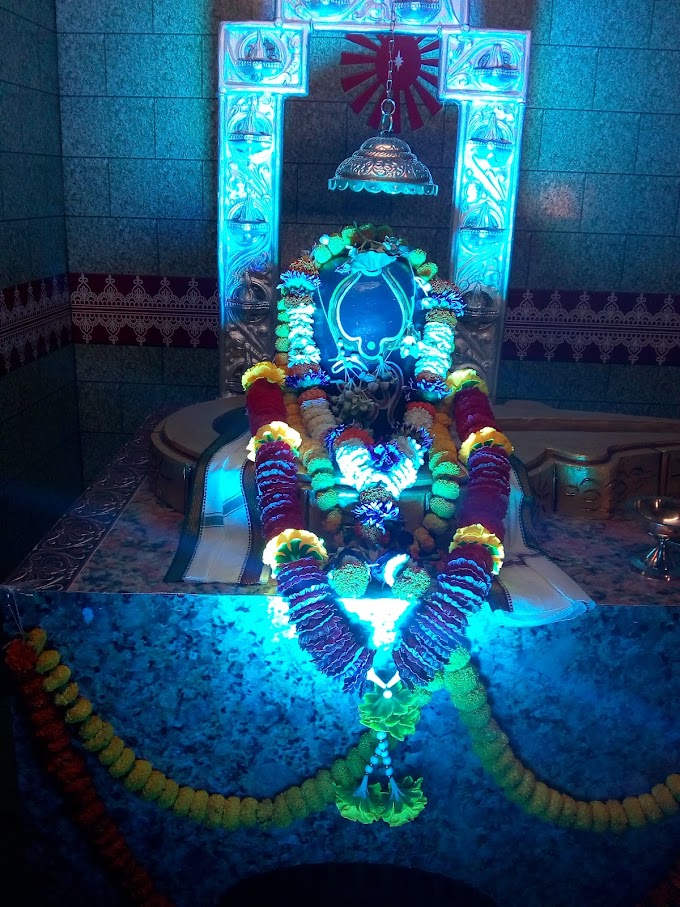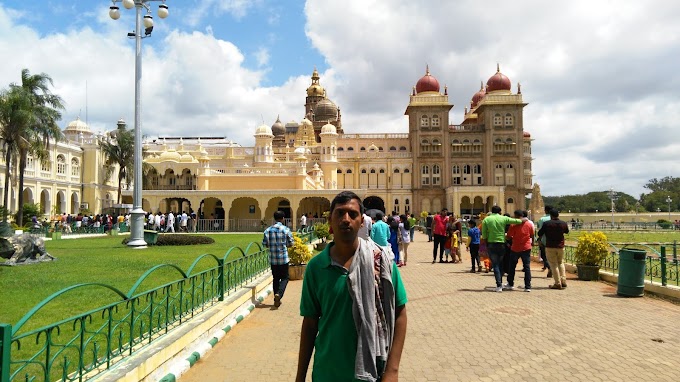ANCIENT CULTURE
Indian culture is one ancient culture in world and is worldwide
famous and everybody are interested to know the Indian Culture. Two ancient scripts
which is commonly known as RAMAYANA and MAHABHARAT give new light to world. The
Mahabharata and the Ramayaṇa are the oldest preserved and well-known epics of
India culture. Versions have been adopted as the epics of Southeast Asian
countries like Philippines, Thailand, Malaysia and Indonesia. The Ramayana
consists of 24,000 verses in seven books (kaṇḍas) and 500 sargas and the story
of Rama (an incarnation or Avatar of the Hindu preserver-god Vishnu), whose
wife Sita is abducted by the demon king of Lanka, Ravana. This epic played a
pivotal role in establishing the role of dhárma (truth) as a principal ideal
guiding force for Hindu way of life.
The earliest parts of the
Mahabharata text date to 400 BC and is estimated to have reached its final form
by the early Gupta period. In addition to these two great Indian epics, there
are The Five Great Epics of Tamil Literature composed in classical Tamil
language — Manimegalai, Civaka Cintamaṇi, Silappadikaram, Valayapathi and
Kundalakesi.
RAMAYANA
As per the Indian mythology,
the Ramayan is written by the Sages Balmik prior to the incident / occurrence
by seen his spiritual divine at the period of “Tratya Yuga”. The Ramayana is alienated of seven kanda . the seven kandas are Bala Kanda, Ayodhya Kanda, Aranya Kanda, Kishkindha Kanda, Sundara Kanda, Yuddha Kanda and Uttara Kanda. This holy script show many
thing but I am giving just one illustration:- if any one ready this holy script
then come to know that if you go against a woman then you will lose everything (
like Ravan) and another things the relation between two brother if one brother
is your enemy then he can destroy another brothers (like Ravan and Bivisana,
Bali and Sugriba) everything and if two brother is good in relationship then
they can defeat even a monster (like Rama and Laxman).
MAHABHARAT
As per the Indian mythology, like Ramayan,
Mahabharat is also a holy book which gives light to world, Sages Vyasa is
written the Mahabharat prior to the occurance by seen his spiritual divine at
the period of “Dwapara Yuga” the Mohabharat is divided into 18 books / pravas
like Adi Parva, Sabha Parva, Vana Parva, Virata Parva, Udyoga Parva, Bhishma
Parva, Drona Parva, Karna Parva, Shalya Parva, Sauptika Parva, Stri Parva, Shanti
Parva, Anushasana Parva, Ashvamedika Parva, Ashramavasika Parva, Mausala Parva,
Mahaprasthanika Parva and Svargarohana Parva. The topic of this mahabharat is
over property of brothers and misbehavior of brothers (Kurava) to a woman (Dropati). This holy
script mention that If you stand on the way of truth then lord will help you
always directly and indirectly like Lord Krushna / Krishna. Lord always take
rebirth to destroy the monster who stand against truth. In Hinduism, Bhagbat
Gita is a holy book. Lord Krishna whatever
told to Arjuna at the time of battle in battlefield that is called Bhagbat
Gita. Every problem has solution in Bhagbat Gita. What is indicated in Guta, the same things are also indicated
in KORAN and BIBLE.
Even at the end of Dwapara Yuga, lord
Kirshna also described about Kali Yuga. What is the case of Kali yuga, what
will happen in kali yuga and how it will end. Like the present
scenario(COVID-19 pandemic situation) also indicated ( human being will use
mask and stay home like Zoo and they will fear to meet with other persons.
In these books many type of social, behavior ideology, intention of human, Karma of a human etc are mention in these script which are never mention any other religion or any country. Every human should know concept of the above holy scripts.
“Buddham Saranam Gacchami
Dhammam Saranam Gacchami
Saranam Saramam Gacchami”
Form then the culture of Boudhaism / Buddhist come to Orissa. Dhauli Dhauli is located on the bank of river Daya near Bhubaneswar and holds great significance for the followers of Lord Buddha. Dhauli is said to be the witness of the reform of Ashoka's character. The Daya river is said to have turned red with the blood of the many deceased after the battle and enabled Ashoka to realize the magnitude of horror associated with war. He saw to it that Dhauli became an important center of Buddhist activities. He built several Chaityas, Stupas and Pillars there. He got abodes excavated for the recluse, instructions inscribed for officials, expounded the main principles of dandaniti for the public, provided special status to his new kingdom including the Stupas at Dhauli. There are two temples at Dhauli. One of Vairangeswar Mahadev and Dhabaleswar Mahadev. Know more:
Many country is adopting the Indian culture like Sri Lanka, Nepal, Thailand and China (are adopting BOUDHAISM / BUDDHIST Culture). many other country also adopting Indian Culture in name of IskON Culture (worship Lord Krishna / Lord Jaganath)
OTHER POINT OF VIEW
The busy cities of
Mumbai, Kolkata, Chennai and Delhi contain a melting pot of rapid economic
development and technological innovation, with a notable example being the
continually expanding telecommunications sector. Such cities demonstrate India's
rise as an economic and political powerhouse on the world stage. This is also
represented by the Diaspora of Indian people throughout the globe. The large
metropolitan cities stand in contrast to the hundreds of thousands of villages
and small towns, each containing distinctive micro-societies. Indians can often
determine, where someone is from based on their accent, language, style of
dress and manner. Indeed, it is common to find people having a sense of
regional pride and identity towards their place of origin.
The
important contemporary Indian musical forms included film and Indi pop. Film
refers to the wide range of music written and performed for mainstream Indian
cinema, primarily Bollywood, and accounts for more than 70 percent of all music
sales in the country. Indi-pop is one of the most popular contemporary styles
of Indian music which is either a fusion of Indian folk, classical or Sufi
music with Western musical traditions.
Bollywood is the informal name given to the popular Mumbai-based
film industry in India. Bollywood and the other major cinematic hubs (in
Bengali Cinema, Oriya film industry, Assamese, Kannada, Malayalam, Marathi,
Tamil, Punjabi and Telugu) constitute the broader Indian film industry, whose
output is considered to be the largest in the world in terms of number of films
produced.
A study published in April 2016 in the Journal of Indian Ocean
Archaeology found that some Indian horns have many similarities with horns made
in Ireland. This research may suggest that the two countries may have exchanged
ideas and techniques in making musical instruments during the Bronze Age.
"Some horns are frankly shockingly similar, to the point where it is like
witnessing time travel an archaeologist and doctoral student at the Australian
National University in Canberra, told Live Science. If I was to find one of
these modern Indian instruments in an Irish archaeological excavation and it
was a Late Bronze Age Irish artifact."
In Hinduism, the cow is regarded as a symbol of ahimsa
(non-violence), mother goddess and bringer of good fortune and wealth. For this
reason, cows are revered in Hindu culture and feeding a cow is seen as an act
of worship. This is why beef remains a prohibited food in mainstream Hindu and
Jain society.
Indian women are often seen wearing 'saris. The sari is a single
cloth and needs no stitching; it is easy to make and comfortable to wear, and
also adheres to religious custom. It initially started as a Hindu tradition but
has very gracefully spread across all religions. The same applies to the more
functional 'Kurta-Pyjama', and the formal wear of 'Sherwani' for Indian men of
all faiths.
The Archaeological
Survey of India (ASI), under the Ministry of Culture, was established in the
year 1861 is the premier organization for the archaeological researches and
protection of the cultural heritage of the nation. Users can get detailed
information related to excavations, conservations, museums, epigraphical
studies, etc. Know more:
once open a time Indian Culture was united and presently after independence of India, it is divided. there are many language, religions and their behavior. In India some persons are also adopted western culture. Due to transport facility, many Indian
are presently outside of India like USA, UK, France, Canada etc. and they are
adopting their culture and when they reverted back to India, they cannot easily
adopted Indian Culture.











